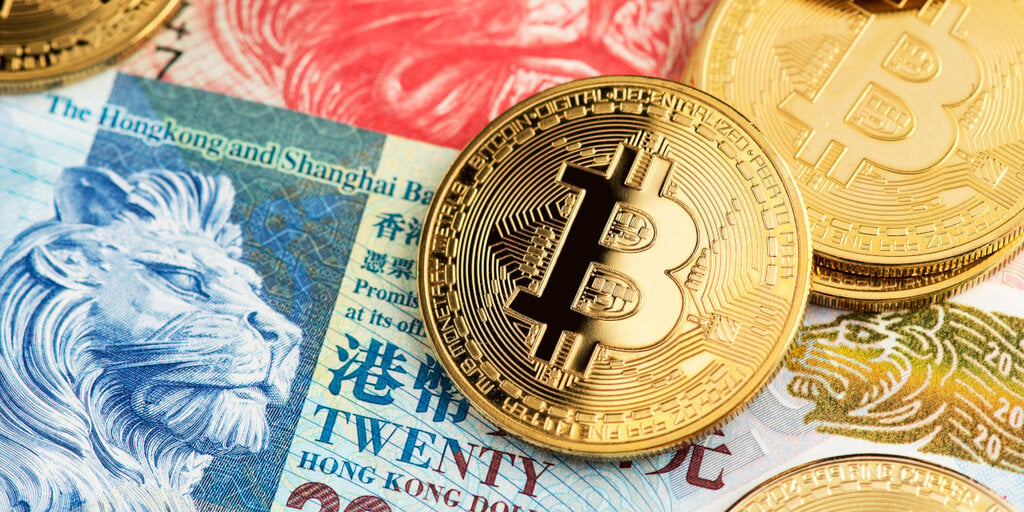Hong Kong’s spot Bitcoin and Ethereum exchange-traded funds (ETFs) could begin trading by the end of the month, the veteran analyst behind 10x Research told Decrypt.
“While no trading date has been set, expectations are for April 30,” said 10x Research founder Markus Thielen. He also writes research reports for Singapore-based trading platform Matrixport and was previously its Head of Research and Strategy.
Thielen’s comments come the day after Hong Kong gave conditional approval for a number of spot Bitcoin and Ethereum ETF applications managed by China Asset Management, Harvest Global, Bosera, and HashKey, respectively.
As a result of the U.S. approving spot Bitcoin ETFs in January, there was a substantial increase in demand for crypto asset exposure, which has helped push along the most recent bull run. But according to Thielen, the level of success of Hong Kong ETFs heavily depends on whether Chinese mainland investors can purchase them.
The Shanghai Stock Exchange’s southbound stock connect allows qualified mainland China investors to access eligible Hong Kong financial assets. The southbound connect has a daily quota of ¥42 billion—and if exceeded, trades will be rejected. But in recent years, this quota hasn’t been reached.
“This program allows mainland investors to buy up to ¥500 billion ($69 billion USD) of Hong Kong-listed stocks annually—or equivalent to HK$540 billion annually,” Thielen told Decrypt. “During the last three years, the annual spare quota was HK$100 billion to HK$200 billion ($15 billion to $25 billion).”
“If Chinese investors could buy,” he added, “this is how much mainland investors could allocate—as an upper limit.”
However, this future seems unlikely for now, as Thielen believes that the ETFs will not become part of the southbound program for at least six months.
“Most market participants expect Chinese mainland investors to be unable to buy these products and that they will not be added to the southbound connect program,” Thielen explained. “Currently, Hong Kong ETFs need to have been listed for six months, but regulation could always change.”
That said, Thielen suggested that due to “China’s property worries” and decade-long weakness in the stock market, the country could look to Bitcoin to diversify its assets.
“Although some forms of Bitcoin activities are banned in China, the ban might be primarily motivated by the fear of social unrest due to scams, illegal capital raising, etc,” Thielen said. “A regulated product like the Bitcoin and Ether ETFs is more favorable.”
Despite China’s ban of crypto trading and mining in 2021, the country has remained at the forefront of crypto conversations. In 2023, top crypto exchange Binance processed $90 billion of Chinese transactions in a single month—accounting for 20% of Binance’s worldwide volume at the time.
Since then, Hong Kong has positioned itself as the next crypto hub—opening trading to retail investors and now approving crypto spot ETFs—which experts told Decrypt could be China using the territory as a “testing ground.”
“Nothing happens in Hong Kong without China’s blessing—not even a raindrop,” Thielen added. “So when the two leading financial market authorities (HKMA and SFC) approve Bitcoin and Ethereum ETFs, there must be a conscious decision and a calculation around the impact this might have.”
However, Thielen suggested that this might not be as bullish as many crypto enthusiasts first thought, due to cultural differences in investing.
“ETFs have limited success in Asia as investors like to take direct/concentrated bets, instead of buying a basket of something,” he said. However, in this case, as the ETFs represent a single asset rather than 10 to over 100 stocks, it’s much closer to being a direct bet.
“Therefore, the success rate could be much larger than that of other basket-time ETFs,” he added.
Edited by Andrew Hayward
The views and opinions expressed by the author are for informational purposes only and do not constitute financial, investment, or other advice.
This news is republished from another source. You can check the original article here

